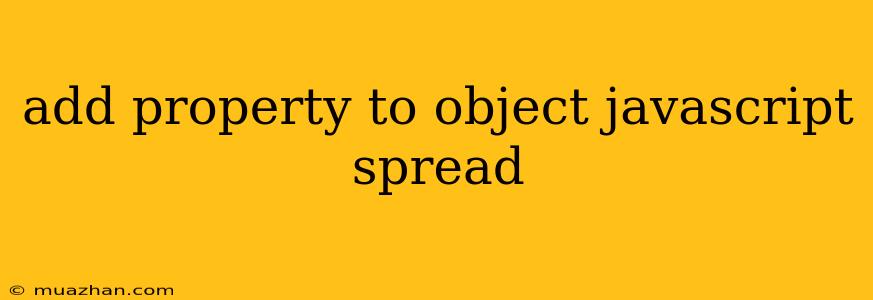Adding Properties to Objects Using JavaScript Spread Syntax
The spread syntax (...) is a powerful tool in JavaScript, allowing you to easily create new arrays and objects from existing ones. It's particularly useful when you want to add new properties to an existing object without modifying the original object.
Understanding the Spread Syntax
The spread syntax effectively unpacks the elements of an array or the properties of an object. When used with an object, it extracts all the key-value pairs from the object and creates a new object with those properties.
Adding Properties to Objects
Let's see how we can use the spread syntax to add properties to an object:
const originalObject = {
name: "John Doe",
age: 30
};
// Adding a new property "occupation" using the spread syntax
const updatedObject = { ...originalObject, occupation: "Software Engineer" };
console.log(updatedObject);
// Output: { name: "John Doe", age: 30, occupation: "Software Engineer" }
In this example, ...originalObject expands the properties of the originalObject, and we add a new property occupation to the new object. The updatedObject now contains all the properties of the originalObject plus the newly added property.
Key Points to Remember
- Immutability: The spread syntax creates a new object, leaving the original object unchanged. This is essential for maintaining data integrity and avoiding unintended side effects.
- Order of Operations: When you use the spread syntax, it takes the properties from the object on the left side of the spread operator and then applies any properties specified after it.
- Overriding Existing Properties: If you include a property in the spread syntax that already exists in the object, the new value will overwrite the existing value.
Additional Examples
1. Adding Multiple Properties:
const originalObject = {
name: "Jane",
city: "New York"
};
const updatedObject = { ...originalObject, country: "USA", age: 25 };
console.log(updatedObject);
// Output: { name: "Jane", city: "New York", country: "USA", age: 25 }
2. Combining Properties from Multiple Objects:
const user = { name: "Alice", age: 28 };
const address = { city: "London", country: "UK" };
const combinedObject = { ...user, ...address };
console.log(combinedObject);
// Output: { name: "Alice", age: 28, city: "London", country: "UK" }
Conclusion
The spread syntax provides a clean and concise way to add new properties to JavaScript objects. It promotes immutability and allows for flexible object manipulation. By understanding its mechanics and utilizing it effectively, you can streamline your code and enhance your JavaScript development.
